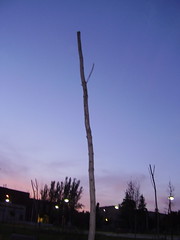Paintings, Pots, and Pillows: A Review of "Vistas"
"Vistas: Visual Culture in Spanish America, 1520-1820" is structured as an online exhibit. It includes images as diverse as a coffee pot, a coin, a feathered portrait of Jesus, a Northern mission in Texas, an oil painting of the Virgin Mary, and a coca-leaf bag. Created in the late 1990s by two art historians frustrated with how difficult it was for their students to have access to a broad range of visual materials from Colonial Latin America, "Vistas" tends to have the tone of a lively lecture; it points to difficult, open-ended questions but provides no space for the visitor to engage with them. Every image is accompanied by a link labeled "discussion." The discussion simply provides more detailed context regarding the image, like the plaque with a block of text next to paintings in museums. These are, however, exceptionally well-written plaques.
The site is thus aimed primarily at students of Colonial Latin America in both the United States and Latin America. Its main purpose is not archival; its contents are not comprehensive but carefully chosen for its particular features that fit the themes of the website. However, if one would want to look investigate a given theme or time period further, "Vistas" offers an extensive searchable bibliography that both stands alone and is divided up into individual entries accompanying every image. There is also a comprehensive list of museums and exhibitions, with links, in the U.S. and Latin America.
The visitor can choose between two organizational styles on the website, as well as between English and Spanish (which opens it up to a much broader audience outside of the United States). She can choose between navigating the site thematically or chronologically. Choosing to do it thematically is simply more fun, particularly the section entitled "Patterns of the Everyday." Given the great emphasis historians tend to give to textual sources and ideas, it is quite refreshing to see how the creators prompt us to imagine how these objects--a beautifully worked silver coffee pot, a portrait of Jesus made by an indigenous man using a pre-Columbian technique of putting together a mosaic with feathers, or an embroidered shirt--shaped the perceptions people living in Guatemala or Argentina hundreds of years ago; and more importantly, how ideas can be communicated quite effectively visually (and in many cases, better than textually).
The careful choice of themes and of the objects themselves point to an underlying argument regarding the importance of everyday visual culture from a variety of social vantage points that the creators of the website hope to communicate not only to students, but also to their colleagues. Art history of Latin America in general, they explicitly argue, tends to be crowded with elite artifacts that obscure the importance of the visual culture of non-elite members of society. The creators juxtapose a portrait of an elite Peruvian in an elaborate dress to a beautifully crafted basket from California made by a woman who wrote her name into the decorative edges. The visitor is prompted to imagine what these women's worlds might have looked like. The differences in color, texture and function throw off balance any of the homogenizing presuppositions we might have brought with us regarding Spanish America in the first place. The aim is to provide the visitor with an inkling of the great diversity of Spanish America, in spite of the preponderance of the canonically sanctioned art derived from Spain in the scholarship and in the archives themselves.


0 Comments:
Post a Comment
<< Home